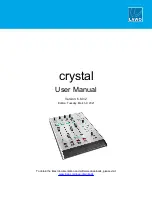
2
This document contains all information required for using and maintaining the DEHNcare series. Read this user
information carefully before use to ensure proper protection! Failure to take this information into account may
result in serious injury. The declaration of conformity (pdf) is available on www.dehn-international.com by ente-
ring the Part No. shown on the label in the search box.
General notes:
Mechanical and thermal risks (arc faults) cannot be entirely ruled out during maintenance and repair work
on electrical installations.
The protective suit (APJ, APT, APC) is tested to EN 61482-2:2018 and protects workers from the thermal
effects of an arc fault whilst working on electrical installations.
The protective suit (APJ, APT, APC) does not constitute insulating protective clothing for live working
according to EN 50286.
DEHNcare
personal protective equipment consisting of a jacket, trousers and long jacket (coat) complies
with category III according to EU regulation 2016/425 and meets the requirements of the following
standards:
- EN ISO 14116:2015 - Clothing for protection against heat and flame
- IEC 61482-2:2018 - Protective clothing against the thermal hazards of an electric arc
Limitations of use
Limited flame spread is no longer ensured if the protective clothing is soiled with flammable substances. For this
reason, protective clothing must be cleaned in good time. If the oxygen content in the air is too high, flame
protection is reduced. The garment does not provide protection against electric shock. It is not suited for air
temperatures of more than 100°C (with or without infrared radiation) or comparable incident energy. The
garment only protects the wearer against the thermal effects of an arc. Protection against direct electric effects is
not ensured. If flammable liquids splash on the PPE without the chemical or liquid coming into contact with the
wearer’s skin, the wearer must immediately withdraw and remove the garment. The garment must then be
cleaned or disposed of.
Instructions for use:
Fastenings, e.g. zips, on the protective clothing - consisting of jacket, trousers and coat - must always be closed
during use.
Prior to each use, all parts of the protective suit must be checked to ensure that they are in good condition
and there is no mechanical damage or soiling on the surfaces.
Direct contact with water, oil, lubricants and cleaning agents should be avoided.
In the event of mechanical damage (holes, tears, open seams, etc.) and/or heavily soiling (cleaning agent, oil
and lubricant residues), the protective suits should be withdrawn from service as arc fault protective suits.
Protective suits should be transported in their packaging to protect them against dirt.
Faulty, soiled protective suits must be marked by removing (cutting out) the type label.
To ensure full body protection, other suitable protective equipment must be worn (e.g. helmet with face
shield, protective gloves and shoes/boots).
Soiled protective clothing and other garments worn in combination with protective clothing can adversely
influence the protective effect.
Garment such as shirts, underclothing or underwear made of, for example, polyamide, polyester or acryl fibres
must not be worn as they melt when exposed to an arc.
Protective suits may get entangled in moving machine parts and are therefore not suited for this kind of
work.
The service life depends on the use, care and storage of the protective suit.
Cleaning:
The leather surface of the protective suit may be cleaned only when it is dry using a soft brush.
Protective suits may not be washed in suds.
Care labelling: Do not wash!
Repair instructions:
Repair may only be performed by qualified companies using original material.
Warning:
Do not perform repairs yourself; repair work must not compromise the performance
of the garment.
Storage:
Protective suits should be stored in their original packaging in closed dark rooms at a room temperature
of -10 to 45°C and a maximum relative air humidity of < 85%.
Subsequent changes to the protective suit which do not conform with the EC-type examination are not
allowed.
Accessories:
Pair of braces
The braces have four hook-and-loop fasteners. To attach the braces, these fasteners are threaded through the
appropriate leather loops on the protective trousers and closed.
Foam kneepads
The two kneepads can be fitted into the lining of the protective trousers. First, the legs of the protective
trousers are rolled up. The lining of the trouser legs features a pocket with hook-and-loop fastener. The two
kneepads are inserted, and the hook-and-loop fastener closed to keep them in place before rolling the
trouser legs back down.











































